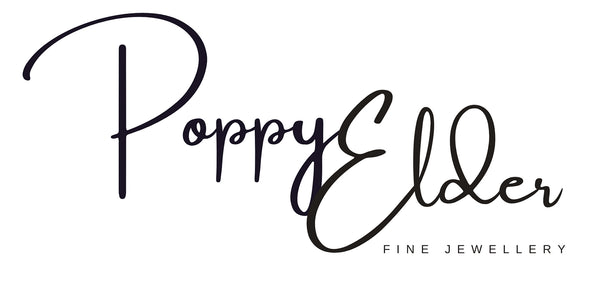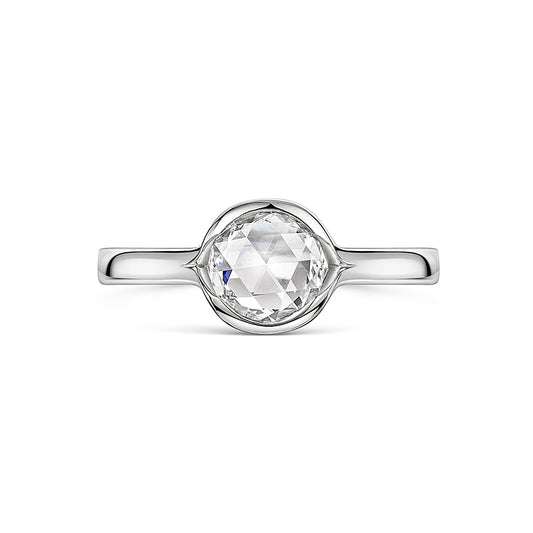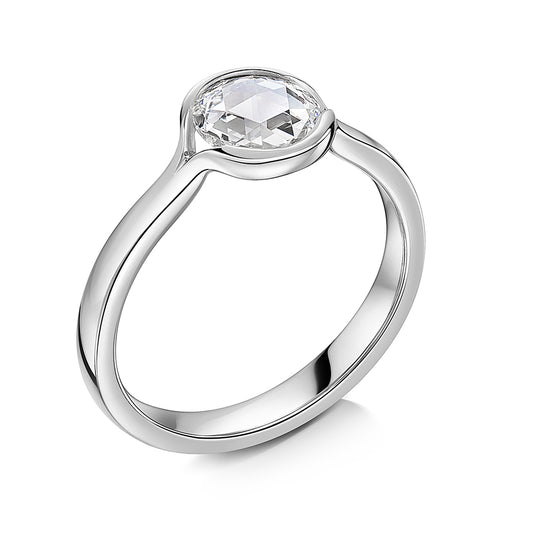Understanding Carat Weight
and Diamond Size
When choosing diamond engagement ring, many people instinctively focus on carat weight, thinking bigger is always better. However, understanding how carat weight and millimetre size work together can give you a much better idea of how large your gemstone will actually look. In fact, studies show that 85% of people choose a diamond based on carat weight alone, without fully considering how the shape and cut can influence the perceived size
But there's more to it than just carats—factors like cut quality and stone shape can make a smaller carat stone look just as stunning, if not more so, than a larger one.
In this guide, we'll break down the relationship between carat weight and millimetre size and help you make the most informed decision for your bespoke engagement ring. Whether you’re looking for maximum sparkle or a more budget-friendly option, you’ll learn how to choose a stone that looks perfect for you. Let’s dive in!


What is a Carat?
Diamond weight is measured in carats. One carat is equal to 0.2g.
But why is it measured like this? Well the modern carat system is based on a very old method which comes from the carob seed, which comes from the locust tree. Because the small seeds are very uniform in size and weight, they were a useful standard for determining the weight of a gem. Early gem merchants and jewellers used carob seeds as counterweights in scales so that they could get an accurate measurement of weight.
Carat weight became standardised at 0.20 gram during the early twentieth century, offering trade experts a universally accepted weight standard for diamonds.
Image from GIA.
What is Carat Weight?
The Difference Between Carat Weight and Millimetre Size
Carat weight is often confused with the actual size of a gemstone. Carat measures the weight of the stone, while millimetres describe the stone's dimensions. So, a higher carat weight doesn’t always mean a larger-looking gemstone. In fact, stones of the same carat weight can vary in how big they look, depending on their shape and cut. That’s why understanding millimetre size is key to visualizing how big your stone will actually appear on your hand.
Why Carat Weight Doesn’t Always Equal Size
One important thing to know: carat weight is all about density. For example, a 1-carat diamond in a round cut might look smaller than a 1-carat emerald cut, even though they weigh the same. Some cuts simply “spread” more, giving you a larger-looking stone for the same carat weight. That’s where my expertise comes in—I’ll help you find a stone that maximises size and sparkle, not just weight.
What does a Carat mean in MM?
Using a Carat-to-Millimetre Conversion Chart
Visualising Your Diamond with the Millimetre Chart
Now, let’s look at the Diamond mm Chart I’ve created, which gives you a direct conversion from carat weight to millimetre size for round diamonds. A 1-carat round diamond is typically around 6.5mm in diameter. But as we move to different shapes, like oval or marquise, the millimetre dimensions change even though the carat weight stays the same. This is why it’s essential to consider more than just weight when visualising your perfect stone. As you can see the elongated stones like a marquise or pear can be long and slender or more squat depending on the ratio of how they have been cut – this then has an effect on how large the diamond will appear.
Above is a chart to understand just what a mm in size really means when buying a round diamond, but what about other shapes?
Understanding the 1ct Stone Size Comparison Chart
When comparing gemstones, it’s helpful to look at both carat weight and millimetre dimensions. Check out my 1ct Stone Size Comparison Chart, which shows how different cuts (like round, oval, or pear) appear in size, even at the same carat weight. A 1-carat pear-shaped diamond can look longer and larger than a round stone of the same weight, making it a fantastic choice if you’re aiming for a bold statement ring without going over budget.
How Shape and Cut Affect Stone Size Perception
Round vs. Fancy Cuts
Let’s talk about stone shapes! Round diamonds are classic and stunning, but if you want a stone that looks larger for the same carat weight, fancy shapes like pear, marquise and elongated emerald cuts are the way to go. These elongated shapes tend to spread out more on the finger, giving the illusion of a larger gemstone. Choosing a fancy cut can help you achieve the “wow” factor without needing to increase the carat weight (and therefore, the price).
How Cut Quality Influences the Stone’s Appearance
It’s not just about the shape, though—the cut plays a major role in how big and bright your diamond appears. A well-cut diamond reflects light beautifully, making the stone look bigger and more brilliant. In contrast, a poorly cut stone might weigh more in carats but appear dull and smaller than its well-cut counterpart. As part of my bespoke service, I’ll work closely with you to ensure we choose a diamond with the perfect cut that enhances its brilliance and size.
Choosing the Right Stone Size for Your Lifestyle
The Practical Considerations of Gemstone Size
While bigger might seem better, practicality matters too! If you lead an active lifestyle or work with your hands, you might want to choose a stone that balances size with durability. Large stones can be eye-catching but may also be more prone to damage if they protrude too much from the setting. I’ll help you find the right size stone that fits your lifestyle, so you don’t have to sacrifice beauty for practicality. If you want a diamond that looks large without sitting too high from the finger you could consider a rose cut diamond, as these tend to be fairly flat and sit low to the finger whilst looking large for their relative size.
Tailoring Your Stone Size to Your Setting
The ring setting can make a huge difference in how your gemstone looks. A halo setting, for example, surrounds your centre stone with smaller diamonds, making the overall appearance larger without adding to the carat weight of the main stone. In contrast, a solitaire setting focuses all the attention on one central stone. Depending on your vision, I’ll work with you to choose the perfect combination of stone and setting that enhances the size and overall look of your engagement ring.
Some Different Setting Styles
Simple Round Diamond Engagement Ring in Platinum
Diamond Halo Engagement Ring Cushion Cut
Rose Cut Diamond Engagement Ring

Understanding the Best Gemstone Size for Your Engagement Ring
Choosing the perfect gemstone for your engagement ring involves much more than just looking at carat weight. By understanding how carat weight, millimetre size, and cut quality all interact, you can make a more informed decision about the stone that will best suit your personal style and budget. While carat weight is a good starting point, the shape of the gemstone and the quality of the cut can significantly influence how large and brilliant the stone appears.
With my bespoke engagement ring service, you’ll have access to expert guidance on how to choose a stone that looks its best for the carat weight, whether that’s through selecting a shape that maximizes size or a setting that enhances its brilliance. By focusing on factors like millimetre size and cut quality, you can create a truly one-of-a-kind ring that balances beauty, durability, and practicality.
Ready to design something stunning? Let’s start the journey toward your perfect engagement ring today!
Learn more about engagement rings
View all-
Understanding Carat Weight and Diamond Size for...
When choosing an engagement ring, many people instinctively focus on carat weight, thinking bigger is always better but that’s not always the case. Learn why a bigger carat doesn’t necessarily...
Understanding Carat Weight and Diamond Size for...
When choosing an engagement ring, many people instinctively focus on carat weight, thinking bigger is always better but that’s not always the case. Learn why a bigger carat doesn’t necessarily...
-

Unusual Solitaire Engagement Rings: A Guide to ...
Create unique and bespoke unusual solitaire engagement rings. Explore our distinctive designs, from vintage-inspired settings to modern artistic styles, and start crafting a one-of-a-kind ring that truly reflects your love...
Unusual Solitaire Engagement Rings: A Guide to ...
Create unique and bespoke unusual solitaire engagement rings. Explore our distinctive designs, from vintage-inspired settings to modern artistic styles, and start crafting a one-of-a-kind ring that truly reflects your love...
-

Finding the Perfect Engagement Ring for Men
Finding the Perfect Engagement Ring for Men: A Guide for All Love Stories In a change from the usual, let’s have a look at the wonderful world of men's engagement rings,...
Finding the Perfect Engagement Ring for Men
Finding the Perfect Engagement Ring for Men: A Guide for All Love Stories In a change from the usual, let’s have a look at the wonderful world of men's engagement rings,...








